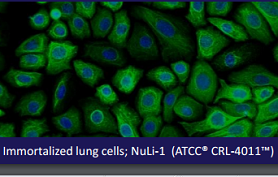Support hotline
400-810-0881
hTERT-mediated immortalized primary cells
It is well known that primary cells most truly reflect the physiological state of a particular cell in the body. However, they generally do not pass for generations and stop proliferating and dying. For some experiments that require a large number of cells, such as biochemical analysis, genetic screening, etc., primary cells cannot be used. This hinders the application of primary cells in the laboratory. In addition, some rare diseases have fewer blood or tissue samples, resulting in a limited number of cells. The normal progress of subsequent experiments is limited. For cell lines that can be passaged indefinitely, although there is no aging problem, they usually contain many genetic mutations, showing unstable karyotypes, and protein expression patterns are not commensurate with cell types.
The question is, is there a way to make the primary cells immortalized while maintaining the physiological characteristics of normal cells?
There are many factors that cause cell immortalization, and telomerase plays an important role in this process. Telomeres are a special structure at the end of a chromosome in a eukaryotic cell. It consists of telomere DNA and telomere protein. The telomere of normal animal cell DNA shortens as the cell divides, and when shortened to a certain length, the cell will stop proliferating and die.
Transfection of primary cells with human telomerase reverse transcriptase (hTERT) can activate telomerase activity, maintain telomere length, prevent telomere degradation, and induce cell immortalization.

Studies have shown that hTERT-mediated immortalized cells can maintain the physiological characteristics of normal cells. Studies on various hTERT immortalized cell lines have confirmed that these cells still have a corresponding phenotype and a stable karyotype. Where the use of proto-oncogenes results in immortalization of cells, cells often undergo karyotypic changes, especially when cells are passaged multiple times.
The following characteristics can be observed by hTERT-mediated immortalized cells:
1. Normal cell cycle control;
2. Contact inhibition;
3. Anchoring dependence;
4. Preservation of normal growth responses to serum and mitogens;
5. Growth factors are required for proliferation;
6. with a normal karyotype;
7. There are no changes associated with transformation, such as tumorigenicity, which can be grown on soft agar.
The hTERT-mediated immortalized cell line combines the physiological properties of primary cells with the long-term culture characteristics of the cell line while avoiding the aging of the former and the unstable karyotype of the latter. In addition, in many studies, hTERT-mediated immortalized cells can be induced to differentiate into different cells, which have specific tissue characteristics and express differentiated cell-specific proteins, and can form a type that can only be formed in vivo. structure.
The ATCC human telomerase reverse transcriptase (hTERT) immortalized cell line represents a major breakthrough in cell biology research, combining the biochemical properties of primary cells with the long-term culture characteristics of traditional cell lines
• Maintains the biological properties of cells in the body, even at higher generations;
• The life cycle is 5 times that of the primary cells;
• Basic maintenance of the diploid karyotype;
• Gene expression does not change substantially compared to primary cells;
• There is no batch difference;
• Reduce inconsistencies in experimental results.
ATCC has the world's largest and most diverse cell line, microbial, and recombinant DNA materials, and is recognized by researchers as a world-class provider of reliable research materials. ATCC continues to provide the world's most reliable scientists. Biological resources to escort the authenticity and reliability of the experimental results.
 京公网安备11010502040370号 Technical Support:Qingyun Software
京公网安备11010502040370号 Technical Support:Qingyun Software